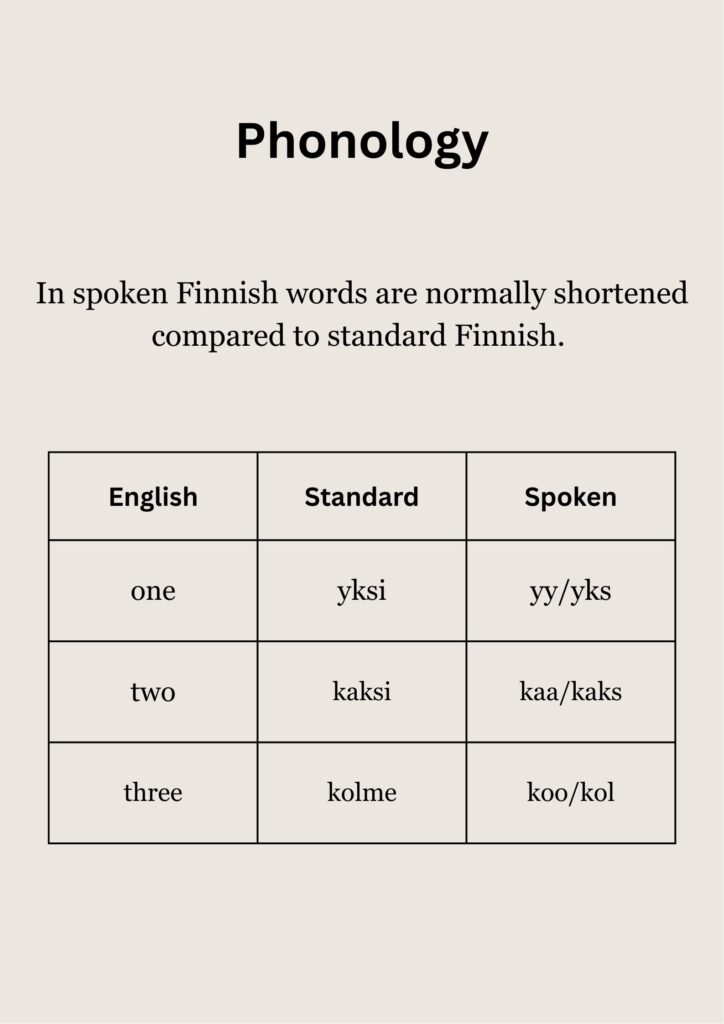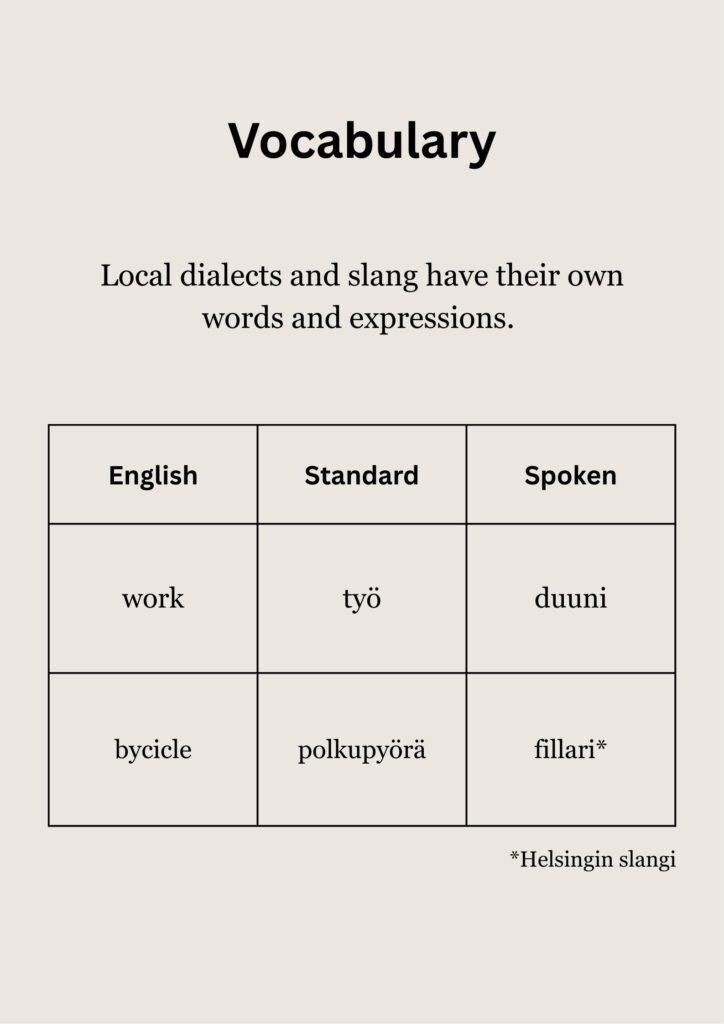For a foreigner, learning Finnish can feel like choosing between two different languages: “kirjakieli” and “puhekieli”

Even though teaching the standard language is mandatory, spoken language is gradually making its way into classrooms and textbooks. PHOTO: NADIIA FEDOROVA.
Flor Salazar Martinez
Published 03.04.2025 at 12:02
Updated 03.04.2025 at 1:30
Learning Finnish presents a challenge for foreigners, as it exists in two distinct forms: standard Finnish (officially known as yleiskieli, more colloquially known as kirjakieli), used in formal communications, and spoken Finnish (puhekieli) used for everyday interactions. The two differ significantly.
For example, in standard Finnish, “I am” is “minä olen”. But when people speak, they might say “mä oon”, “mie oon” or “miä oon” – or some other version depending on the local dialect.
Adult students often feel that learning only standard Finnish at the beginning of their language studies makes the integration process more difficult because natives do not use the standard variety in their conversations. Those who are frustrated but still need to learn a national language may simply resort to learning Swedish.
Many wonder: Where does the difference between standard and spoken Finnish come from?
The distinction has historical roots
“The distinction between spoken and standard Finnish has historical reasons,” says Maria Ahlholm, Senior University Lecturer at the University of Helsinki.
Ahlholm works at the Department of Education Teachers’ Academy. She specializes in Finnish language and applied language studies.
“When the first written form appeared with Mikael Agricola’s printed Bible in the 1500s, the western dialects had a strong influence in the document, and it was only until the 19th century that the eastern dialects gained notoriety,” Ahlholm explains.
“During this period (1809–1917), Finland was under Russian rule, and there was a strong movement to elevate Finnish as a national unifying language.”
According to Ahlholm, standard Finnish was created as an agreement between several strong dialects and was developed to serve as a formal language. However, everyday speech continued to evolve separately.
Puhekieli is slowly being embraced in classrooms
As for the question of whether one should learn “kirjakieli” or “puhekieli”, Maria Ahlholm’s reply is simple: You should learn both, preferably at the same time.
“News, official communications, books, and even children’s tv shows are produced in standard Finnish. Yet in shops, buses, restaurants, meetings, chats, everyone will use spoken Finnish.”
According to Ahlholm, the norms in teaching Finnish to foreigners have started to change. Popular textbooks, such as Suomen mestari and No niin!, have added authentic spoken Finnish in their newer editions, especially in the audio materials.
Teachers are also more willing to accept spoken Finnish forms of words and sentences from their students in classrooms, Ahlholm says.
“My advice for the teachers is that they should try to introduce spoken Finnish to the students from the very first lessons.”
Ahlholm herself was part of the team that, in 2010, produced a Finnish language textbook Sairaan hyvää suomea aimed at helping foreign nurses and doctors to adapt to Finnish working life. It uses puhekieli extensively, for example, through dialogue taken from transcribed conversations between doctors and patients. Ahlholm has also been helping to develop new didactic methods to help students to develop their puhekieli.
In Ahlholm’s opinion, audio news produced in spoken Finnish can also be a good way to close the gap between standard and spoken language. As an example, she mentions the new media startup Uusi Juttu, which uses spoken Finnish in their audio news.
“Personally, I would welcome more fact-oriented programs on television and radio using the spoken form of Finnish consciously. I think that this might make news and analyses more accessible to younger generations.”
How to identify the differences between standard and spoken Finnish?
Differences between standard Finnish (yleiskieli, colloquially known as kirjakieli) and spoken Finnish (puhekieli) can be highlighted by their linguistic characteristics:
Phonology: sounds of a language and how they sound together
Morphology: the way words are built (polku/pyörä/llä/ni vs. by my bi/cycle)
Syntax: how words are ordered together to create the sentences
Vocabulary: words and phrases the language possesses




Source: Mari Ahlholm, Senior University Lecturer, Helsingin yliopisto.
For more information about discussions between spoken Finnish and norms of standard Finnish, see Kielikello. In English, description of differences between standard and spoken Finnish, see Fred Karlsson 2017, Finnish, a comprehensive grammar, chapter 27, The colloquial spoken language (pp. 443–455).